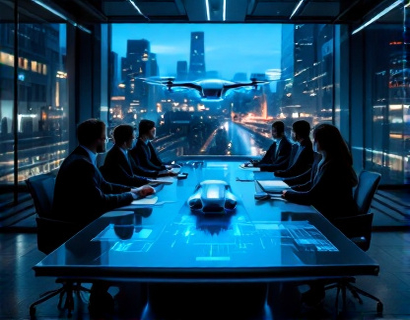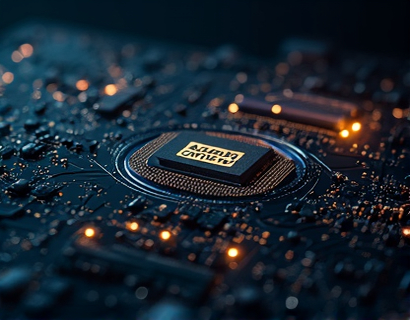Next-Gen Aerospace Innovations: Transforming Efficiency and Safety for Industry Leaders
The aerospace industry stands at the cusp of a revolutionary era, driven by rapid advancements in technology and a relentless pursuit of efficiency and safety. This transformation is not merely an evolution but a paradigm shift, reshaping the very foundations of aviation and space exploration. Industry leaders and visionaries are witnessing firsthand how cutting-edge innovations are redefining the possibilities, offering a forward-looking perspective on the future of aerospace engineering.
One of the most significant areas of innovation is in materials science. The development of advanced composites and smart materials is revolutionizing aircraft design. These materials offer superior strength-to-weight ratios, enabling the construction of lighter, more fuel-efficient aircraft. For instance, the use of carbon fiber reinforced polymers (CFRP) has become increasingly prevalent, reducing the overall weight of aircraft structures while maintaining or even enhancing structural integrity. This not only improves fuel efficiency but also extends the operational range and payload capacity of aircraft.
Another critical area is the integration of advanced sensors and monitoring systems. These technologies provide real-time data on various aspects of aircraft performance, from engine health to structural integrity. By leveraging the Internet of Things (IoT), aerospace manufacturers can implement predictive maintenance strategies, reducing downtime and maintenance costs. For example, sensors embedded in critical components can detect early signs of wear or failure, allowing for proactive repairs before issues escalate. This not only enhances safety but also optimizes operational efficiency.
Avionics technology has also seen remarkable advancements. Modern avionics systems are more integrated and sophisticated, offering enhanced situational awareness and automation. Glass cockpits, which replace traditional analog instruments with digital displays, provide pilots with more accurate and easily interpretable information. These systems often include advanced flight management computers that can handle complex flight planning, navigation, and control tasks, reducing pilot workload and improving safety. Additionally, the integration of artificial intelligence (AI) and machine learning (ML) in avionics is paving the way for autonomous flight systems, which promise to further revolutionize air travel and cargo transport.
In the realm of propulsion, electric and hybrid-electric engines are emerging as viable alternatives to traditional jet engines. These technologies offer significant environmental benefits, reducing emissions and noise pollution. For short to medium-haul flights, electric propulsion systems are particularly promising, with several prototypes already demonstrating impressive performance. While long-haul flights still rely on conventional engines, the ongoing research and development in this area are likely to yield breakthroughs in the near future, making electric propulsion a more practical option for a broader range of applications.
Space exploration is another domain where innovation is accelerating. Reusable rockets, developed by companies like SpaceX, are drastically reducing the cost of access to space. The ability to launch, land, and relaunch rockets multiple times has transformed the economics of space missions, making them more feasible and frequent. This has opened up new possibilities for satellite deployment, space tourism, and even lunar and Mars missions. Reusability not only cuts costs but also enhances safety by allowing for thorough inspections and maintenance between flights.
In-orbit servicing and maintenance are also becoming increasingly important. Robotic systems and autonomous drones are being developed to perform tasks such as satellite repairs, refueling, and debris removal. These technologies are crucial for extending the lifespan of satellites and ensuring the sustainability of space operations. For instance, robotic arms and grippers can be used to capture and repair damaged components, while autonomous drones can monitor and manage space debris, reducing the risk of collisions and maintaining the integrity of orbital environments.
The integration of 3D printing technology in aerospace manufacturing is another game-changer. Additive manufacturing allows for the creation of complex geometries and lightweight structures that would be impossible to produce using traditional methods. This technology is particularly useful for producing custom parts and reducing inventory costs. For example, NASA has already used 3D printing to create rocket engine components, demonstrating the potential for faster production cycles and reduced material waste. As the technology matures, it is likely to become a standard part of aerospace manufacturing processes.
Data analytics and big data are playing a pivotal role in optimizing aerospace operations. By collecting and analyzing vast amounts of data from various sources, including sensors, maintenance records, and flight logs, industry leaders can gain insights into performance trends and identify areas for improvement. Advanced analytics tools can predict maintenance needs, optimize flight routes, and enhance overall operational efficiency. For instance, by analyzing flight data, airlines can identify patterns that lead to fuel consumption and implement strategies to reduce waste and improve performance.
Cybersecurity is an increasingly critical aspect of aerospace innovation. As systems become more connected and reliant on digital technologies, the risk of cyber threats grows. Ensuring the security of avionics, ground control systems, and communication networks is paramount to maintaining safety and operational integrity. Aerospace companies are investing heavily in cybersecurity measures, including encryption, intrusion detection systems, and regular security audits. Collaboration with cybersecurity experts is becoming essential to stay ahead of emerging threats and protect sensitive aerospace infrastructure.
The environmental impact of aerospace operations is another area of focus. Sustainable aviation fuels (SAFs) are being developed to reduce the carbon footprint of air travel. These fuels, derived from renewable resources such as agricultural waste and algae, can be used in existing aircraft engines with minimal modifications. While the production and distribution of SAFs are still in the early stages, ongoing research and investment are expected to make them more viable and widely adopted in the coming years. Additionally, electric and hybrid aircraft for shorter flights are being explored as a means to further reduce emissions.
Autonomous systems are transforming both commercial and military aerospace applications. Unmanned Aerial Vehicles (UAVs) or drones are becoming increasingly sophisticated, capable of performing a wide range of tasks from surveillance and reconnaissance to cargo delivery. Autonomous flight algorithms and advanced navigation systems enable these vehicles to operate with high precision and reliability. In the commercial sector, drones are being used for inspections, agriculture, and even package delivery, offering cost-effective and efficient solutions. In military applications, autonomous systems are enhancing situational awareness and reducing the risk to human operators.
The future of aerospace engineering is also being shaped by international collaboration and regulatory frameworks. Global standards and regulations are essential to ensure the safe and efficient integration of new technologies. Organizations such as the International Civil Aviation Organization (ICAO) and the European Union Aviation Safety Agency (EASA) play crucial roles in setting and harmonizing standards across the industry. Collaborative efforts between governments, industry leaders, and research institutions are vital to drive innovation and address common challenges.
In conclusion, the aerospace industry is on the brink of a transformative era, driven by a convergence of advanced materials, intelligent systems, sustainable technologies, and autonomous solutions. These innovations are not only enhancing efficiency and safety but also opening up new frontiers in aviation and space exploration. Industry leaders who embrace these advancements will be well-positioned to capitalize on the opportunities and lead the way into a brighter, more sustainable future for aerospace engineering.










































